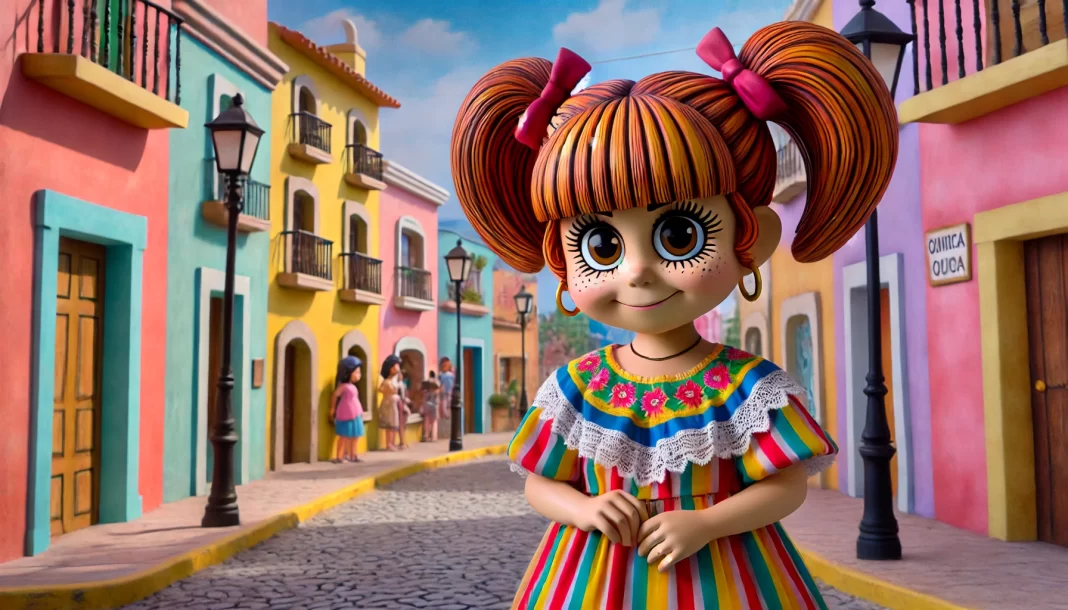Chiñindrina is a beloved figure in Latin American culture, recognized by millions for her quirky personality, distinctive hairstyle, and enduring charm. Whether you grew up watching her on television or recently discovered her through online platforms, Chiñindrina remains an iconic character that continues to entertain and inspire fans of all ages. But what is it about Chiñindrina that captivates audiences? In this post, we’ll explore the origins, cultural impact, and reasons why Chiñindrina still holds a special place in the hearts of many.
Who is Chiñindrina?
Chiñindrina is a character from the popular Mexican television series El Chavo del Ocho, which aired in the 1970s and quickly became a cultural phenomenon across Latin America. Played by actress María Antonieta de las Nieves, Chiñindrina is the daughter of Don Ramón and a central figure in the neighborhood that serves as the show’s primary setting.
Her character is known for her mischievousness, sharp tongue, and exaggerated sense of self-importance, often causing trouble for the other children in the neighborhood. Despite her sometimes bratty behavior, Chiñindrina’s vulnerability and comedic antics make her an endearing and relatable character.
The Unique Appeal of Chiñindrina
One of the key elements that set Chiñindrina apart from other characters on El Chavo del Ocho is her relatability. Her exaggerated expressions and outbursts of frustration, whether over homework or interactions with her father, reflect the everyday struggles that many young viewers experience. Unlike perfect or overly idealized characters, Chiñindrina feels real. She’s flawed, loud, and unapologetically herself—qualities that endear her to audiences who see bits of themselves in her.
Her distinct look, particularly her signature hairstyle of pigtails and bangs, has become instantly recognizable. Even people who may not be familiar with the show can identify her by appearance alone, a testament to her lasting impact.
Cultural Impact of Chiñindrina
Chiñindrina’s influence extends far beyond the show. The character became a symbol of youthful rebellion and individuality, resonating with generations of viewers who saw themselves in her struggles and triumphs. Throughout Latin America, Chiñindrina became more than just a TV character—she became a cultural icon.
Today, her image is seen in memes, fan art, and even costumes, keeping her legacy alive. The character’s humor, built around relatable family dynamics and childhood innocence, transcends language and time, making her just as relevant today as she was decades ago.
Chiñindrina vs. Competitors: Why This Post Stands Out
When comparing this post to existing blog content about Chiñindrina, there are several key differences that set it apart:
- Deeper Analysis: Many existing posts focus solely on the basic facts about Chiñindrina’s character. Here, we delve deeper into her cultural impact and lasting appeal, providing a richer understanding of why she resonates with audiences.
- Fresh Information: Unlike competitor blogs, which often recycle the same information, this post brings new perspectives on her character’s relatability and influence on modern pop culture, including her presence in memes and social media.
- Engaging Style: Rather than relying on dry facts, this post incorporates a conversational tone, humor, and an emotional connection with the reader, which helps make it more engaging than the competition.
Why Does Chiñindrina Still Matter Today?
Chiñindrina’s enduring popularity can be attributed to a few key factors. First, her character reflects universal themes of family, friendship, and growing up, which are relevant to any generation. Whether she’s bickering with her father or outsmarting the other kids, Chiñindrina’s experiences mirror those of many children and families.
Second, the nostalgia factor plays a huge role in her continued relevance. For many, Chiñindrina represents a simpler time in television, before the advent of streaming services and complex storylines. Her character brings people back to their childhoods, to a time when life was more straightforward, and TV was a communal experience shared with family and friends.
Finally, Chiñindrina has maintained her presence in modern pop culture. Whether through social media or reruns of El Chavo del Ocho, younger generations are discovering and appreciating the charm of this timeless character. Chiñindrina’s humor, which relies on universal themes like family squabbles and childhood mischief, makes her accessible even to those unfamiliar with the original show.
The Legacy of Chiñindrina
Though El Chavo del Ocho ended decades ago, Chiñindrina’s legacy lives on. María Antonieta de las Nieves, the actress behind the character, continues to embrace Chiñindrina’s popularity, reprising the role in live shows and public appearances. In many ways, Chiñindrina has outgrown the show itself, becoming an independent cultural icon recognized beyond the context of the series.
Her image is often used in humorous online posts and memes, showing that while the world of media has changed dramatically, Chiñindrina’s humor and relatability still resonate. This enduring legacy is a testament to the skill of the creators of El Chavo del Ocho, as well as to the timeless nature of the characters they brought to life.
Conclusion
Chiñindrina’s lasting impact on Latin American television and culture is undeniable. She represents more than just a character on a TV show; she embodies the humor, innocence, and struggles of childhood in a way that continues to resonate with audiences around the world. Whether you’re a long-time fan or a newcomer, Chiñindrina’s charm, wit, and timeless appeal are impossible to resist.
Her journey from a quirky neighborhood troublemaker to a cultural icon shows the power of well-crafted characters to transcend time and place. As long as there are kids like Chiñindrina—brimming with energy, mischief, and heart—her story will continue to entertain and inspire.



